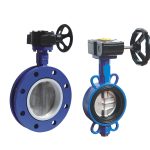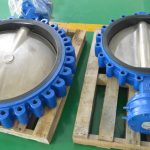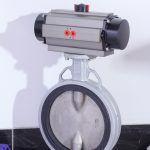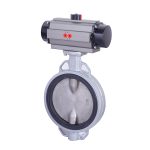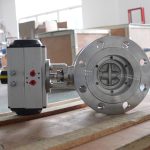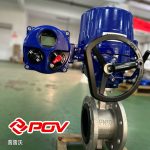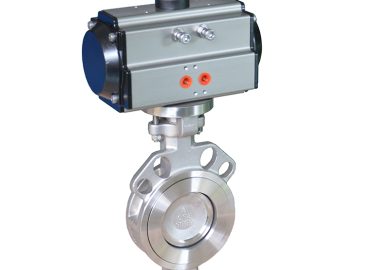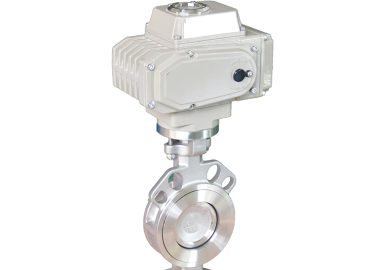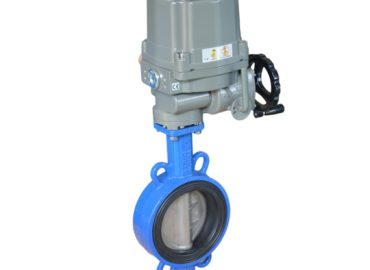Butterfly valve and ball valve are two distinct types of valves used in various plumbing and engineering applications. While both can be used to regulate a fluid flow, their differences go beyond just the shape of the valve. Understanding the features and operation of each type of valve is important for selecting the best option for a particular application.

Introduction Butterfly valve and ball valve
Butterfly valves and ball valves are two distinct types of valves used in various plumbing and engineering applications. While both can be used to regulate a fluid flow, their differences go beyond just the shape of the valve. Understanding the features and operation of each type of valve is important for selecting the best option for a particular application. A butterfly valve consists of a disc that rotates around its center in a circular motion to control the flow of liquid or gas. The disc has two flat sides which open and close like butterfly wings when rotated, providing superior regulating capabilities compared to other valves such as gate or globe valves.
Butterfly valves are typically chosen for low-pressure applications due to their lightweight construction and ease of use. Ball valves, on the other hand, feature a spherical closure device encompassing an opening hole through which liquids and gases can pass.
This provides an efficient way to start, stop and partially regulate flow without having to rotate the valve too much, since only one complete turn is required from open to closed position. Ball valves offer excellent shock absorption ability, making them suitable for high-pressure applications where sudden changes in pressure need to be absorbed.
Additionally, they have lower operating torque requirements when compared with other types of valves such as gate or globe designs. When choosing between butterfly and ball valves, it’s important to consider factors such as pressure ratings, port sizes and end connections as well as operation requirements and flow characteristics.
Wafer butterfly valve are most often used in agricultural irrigation systems while ball valves are more suited for industrial purposes due to their higher pressure rating capabilities. To ensure that you make the right decision for your specific application, it’s important to understand all these features before making your selection.
Definition of butterfly valve and ball valve
Butterfly valve and ball valve are two distinct types of plumbing and engineering valves used to regulate the flow of liquids or gases. A butterfly valve consists of a disc that rotates around its center in a circular motion to control the flow, while a ball valve features a spherical closure device encompassing an opening hole through which liquids and gases can pass. Butterfly valves provide superior regulating capabilities compared to other types of valves due to their lightweight construction and ease of use, while ball valves offer excellent shock absorption capability and lower operating torque requirements when compared with other designs. As such, they can be used in various applications depending on the required pressure ratings, port sizes, end connections and operation requirements.
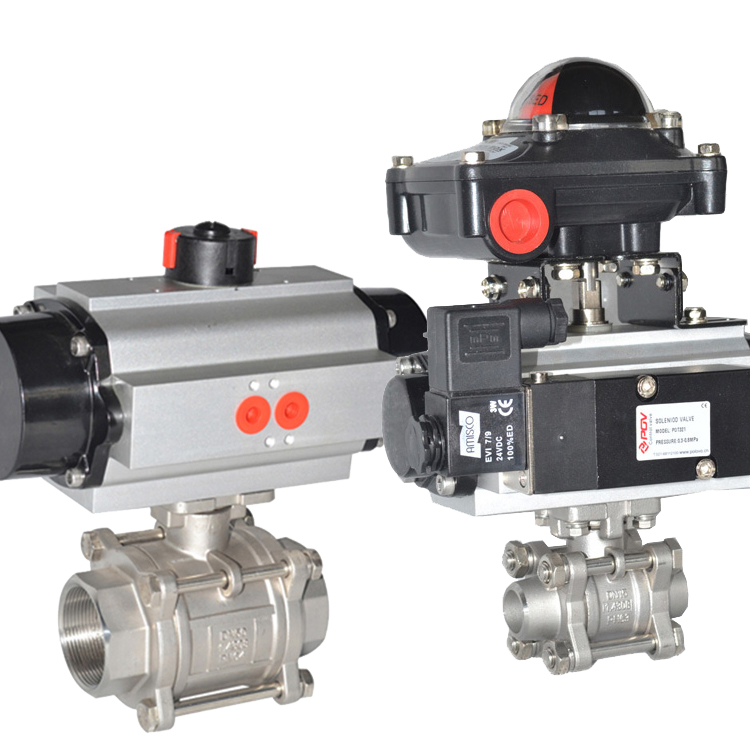
Overview of how they are similar/different
Pneumatic Butterfly valve and ball valves are both used to regulate the flow of liquids or gases in various engineering and plumbing applications. Despite this similarity, the two types of valves have distinct differences in their feature sets and operations. A butterfly valve consists of a disc that rotates around its center in a circular motion to control the flow, while a ball valve features a spherical closure device encompassing an opening hole through which liquids and gases can pass.
Butterfly valves offer superior regulating capabilities compared to other types of valves due to their lightweight construction and ease of use, while ball valves provide excellent shock absorption capability and lower operating torque requirements when compared with other designs. Ultimately, the similarities between butterfly and ball valves come down to their purpose, while the main difference lies in the features they possess.
Working Mechanism Butterfly valve and ball valve
Butterfly valves and ball valves are both used to regulate the flow of liquids or gases in various engineering and plumbing applications. A butterfly valve consists of a cylindrical body with flaps at either end, with a circular disc mounted on an axis that passes through the center of the body. As the disc is rotated around the axis, it blocks or permits liquid/gas flow through the body. The degree of opening or closing is determined by how far the disc is turned relative to its starting position.
On the other hand, a ball valve features a spherical valve closure device encompassing an opening hole which liquids/gases can pass through. By rotating this spherical device within its casing, users can adjust the amount of liquid/gas flowing past it.
When fully open, a ball valve offers near-zero flow resistance; whereas when fully closed it provides excellent leak protection since all contact points between parts are sealed off. Both butterfly and ball valves offer superior regulating capabilities due to their lightweight construction and ease of use, making them ideal for use in numerous applications where pressure ratings, port sizes, end connections, and operation requirements have to be taken into consideration.
How butterfly valve works Butterfly valve and ball valve
Butterfly valves are typically actuated by a circular disc mounted on an axis which passes through the center of the valve body. When the disc is rotated, it either blocks or permits liquid/gas flow passing through the cylindrical body. The amount of opening/closing is determined by how far the disc has been turned relative to its starting position.
Lug butterfly valves offer superior regulating capabilities due to their lightweight construction and ease of use. In addition, their operating torque requirements are lower in comparison with other types of valves and they provide excellent shock absorption performance. This makes them ideal for numerous engineering and plumbing applications such as controlling fluid pressure, regulating fluid flow rate, and preventing backflow.

How ball valve works
Ball valves consist of a spherical valve closure device encompassing an opening hole which liquids/gases can pass through. By rotating this spherical device within its casing, users can adjust the amount of liquid/gas flowing past it. When fully open, a ball valve offers near-zero flow resistance; whereas when fully closed it provides excellent leakage protection since all contact points between parts are sealed off.
Ball valves are extremely durable and reliable as they are designed to handle high pressures and temperatures. Furthermore, they are easy to install, maintain and repair which makes them ideal for a wide range of engineering and plumbing applications such as water treatment plants, sprinkler systems, oil & gas transportation systems, and medical facilities.
Features Comparison Butterfly valve and ball valve
Comparing the features of different valves can be challenging as there are numerous parameters one must consider. Butterfly and ball valves both have their own unique features and pros/cons which make them suitable for different applications. In terms of size, butterfly valves tend to be smaller compared to most other types of valves, while ball valves are generally larger in size due to their spherical design. Butterfly valves can regulate pressure more efficiently, whereas ball valves offer better control over flow rates.
Additionally, Flanged butterfly valves require less operating torque than most other types of valve systems, which makes them easier to turn even with limited leverage force. On the other hand, ball valve components are designed to withstand higher pressures and use an internal mechanical locking mechanism for maximum security against leakage.
When it comes to installation and maintenance, butterfly valves typically require more care due to their delicately designed parts; whereas ball valve components are proven durable over a longer period of time.
Furthermore, butterfly valves also produce a slight humming noise due to fluid flow when fully open which can be bothersome in certain contexts while ball valve designs remain silent even under full operation conditions.
Finally, both types of valves come in manual or automated variations with various customization options such as material selection according to application requirements (e.g., plastic vs metal). In conclusion, each type of valve has its own advantages and disadvantages that should be taken into consideration before making a purchase decision.
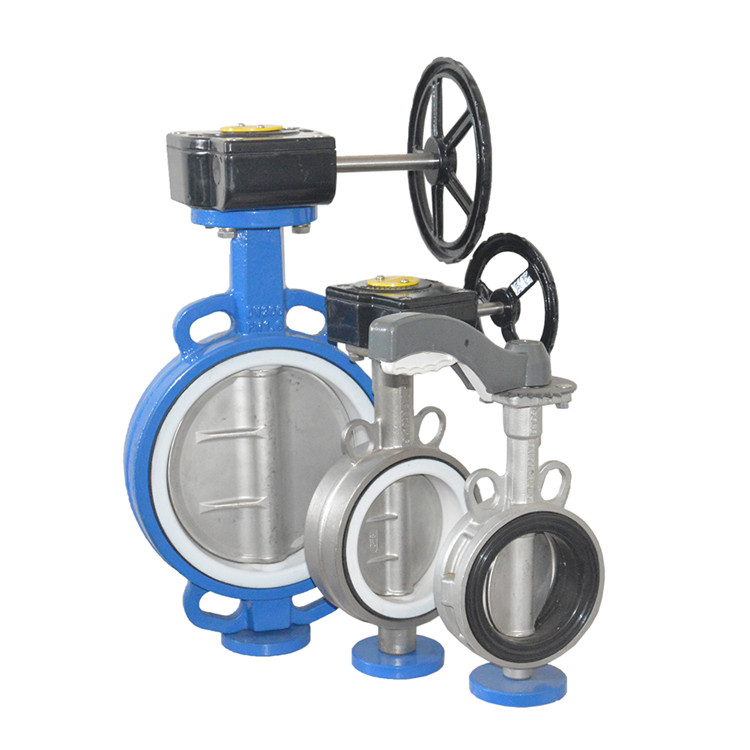
Pressure ratings, port sizes and end connections
Pressure ratings, port sizes, and end connections are all important factors to consider when evaluating a valve system. Pressure ratings refer to the maximum pressure at which a valve is able to safely operate; whereas port sizes and end connections hint at how much liquid/gas can be handled by the valve without experiencing any undesired leaks or sudden changes in the flow rate. For instance, a 1-inch butterfly valve with an ANSI class 150 rating has a higher tolerance limit for internal pressure compared to a similarly sized ball valve rated ANSI class 300. This means it is more suitable for dealing with liquids/gases with lower pressure levels.
Similarly, larger diameter valves come with bigger ports which can handle higher quantities of liquid/gas; however, multiple smaller ports are preferable for applications that require finer control over the flow rate. Lastly, understanding the type of end connection required for each application (e.g., threaded, flanged) will help ensure compatibility between the valves and other piping components in order to achieve optimal performance.
Operation requirements and flow characteristics
Operation requirements and flow characteristics are two important concepts when it comes to choosing the most suitable valve system for a particular application. Operation requirements refer to the amount of force required to operate the valve and its durability in everyday use; which is mainly determined by its material type and size. Whereas, flow characteristics describe how fluid/gas passes through the valve and how much pressure or temperature it can withstand. For instance, when selecting a control valve, knowing how well it can modulate flow rate is essential in order to achieve proper regulation with minimal fluctuations.
On the other hand, when selecting a check valve, understanding its cracking pressure (i.e., the minimum upstream pressure at which the valve will open) along with its back pressure rating (i.e., difference between downstream and upstream pressures) is critical in order to prevent leakage or flooding during normal operations. Additionally, additional features such as corrosion resistance should also be taken into consideration when evaluating valves for specific applications.
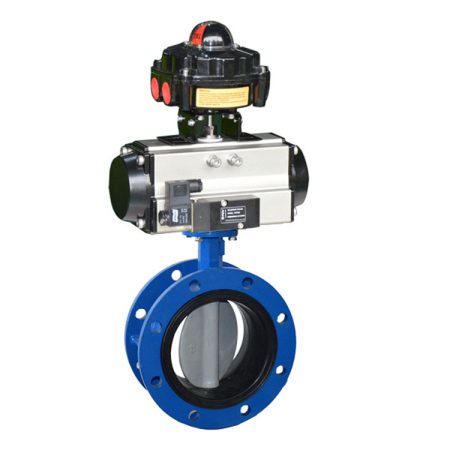
Applications
Valves are used in a wide variety of engineering applications. From water/wastewater treatment to oil and gas pipelines; valves play an essential role in controlling the flow of fluids, gases, vapors, or liquid-solid mixtures. Depending on the particular application, some of the most common types of valves include gate valves, globe valves, ball valves, butterfly valves, plug valves, diaphragm or pinch valves, knife gate valves, cryogenic relief and check valves.
Each type offers its own unique advantages and disadvantages when it comes to flow control; with some better suited for higher pressure systems while others offer better control over flow rate.
For instance; gate and globe valve designs provide tight shut off ability which makes them ideal for isolating sections of a system whereas ball and butterfly valves feature a reduced pressure drop when compared to their counterparts – making them more suitable for low pressure operations where accurate regulation is required. Similarly; plug and pinch valve designs offer good media isolation features whilst check valve construction prevents backflow from taking place.
To ensure optimal performance when selecting a particular valve system for an application; the user must take into consideration factors such as size/dimension requirements (e.g., port size), material compatibility (e.g., corrosion resistance), operational requirements (e.g., force applied) and flow characteristics (e.g., cracking pressure). Additionally; other safety-related factors such as certification ratings also need to be taken into account in order to guarantee compatibility with existing systems and regulatory compliance wherever applicable
Common uses for butterfly valves
Butterfly valves are one of the most popular types of valves due to their inexpensive construction, small size and light weight. They come in a variety of sizes, materials and sealing options which make them suitable for a wide range of applications.
Common uses include controlling water flow in pipes, controlling the flow of oil and gas in pipelines, regulating steam pressure in boilers, controlling chemical mixtures in refineries and isolating sections of the system.
Moreover; butterfly valves can also be used as non-return check valves for applications where tight shut off is not required (e.g., preventing backflow from internal pumps). In terms of performance; these valves are especially well suited for handling high pressure applications up to 600 psi as well as flow control between open/close ranges from 10% – 90%.
Additionally; they are also available with an array of accessories such as position indicators, lockable handles and limit switches which makes them even more suitable for certain demanding industrial environments.
Common uses for ball valves
Ball valves are a popular valve design suitable for a wide range of applications due to their simple construction, durability and versatile operation. Common uses include controlling the flow of water and other liquids in pipelines, regulating oil/gas pressure, regulating steam pressure and isolation of sections of the system. They can also be used as non-return check valves thanks to their low cracking pressures. With regards to performance; ball valves are capable of handling high pressure up to 900 psi as well as accurate flow control with minimal turbulence between open/close ranges from 0% – 100%.
Additionally; they come in a variety of materials such as stainless steel, brass, plastic or carbon steel which makes them suitable for different environments. Furthermore; they also come with options such as lever handles, lockable handles and position indicators which further increase the versatility and utility of this type of valve.
Conclusion
To summarise, butterfly valve vs ball valve are both popular types of valves used in many industrial applications.They share some similarities such as inexpensive construction, small size and light weight. However; each type of valve has their own advantages and disadvantages which makes them suitable for different types of applications. Butterfly valves excel at tight shut offs e.g. preventing backflow from internal pumps, while ball valves are especially well suited for handling higher pressures, accurate control between open/close ranges as well as a variety of material options to suit different environments.
No matter what type of pressure, flow or shut-off requirements you have; understanding the difference between butterfly valve and ball valve is essential to make sure that you choose the right type of valve for your application needs. At the end of the day; choosing the right valve depends on understanding your application requirements so that you can decide if a ball or butterfly valve is best suited for your specific needs.




